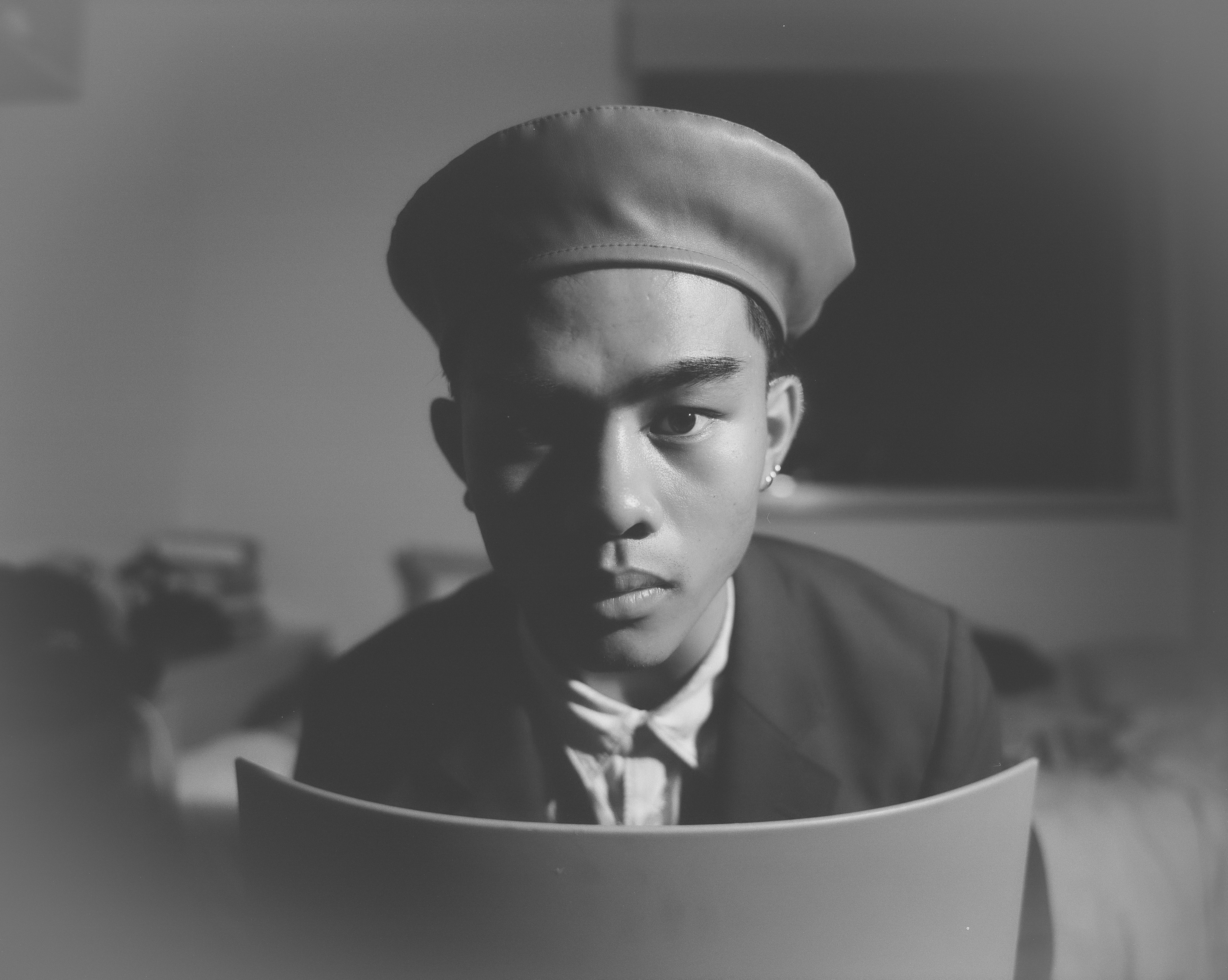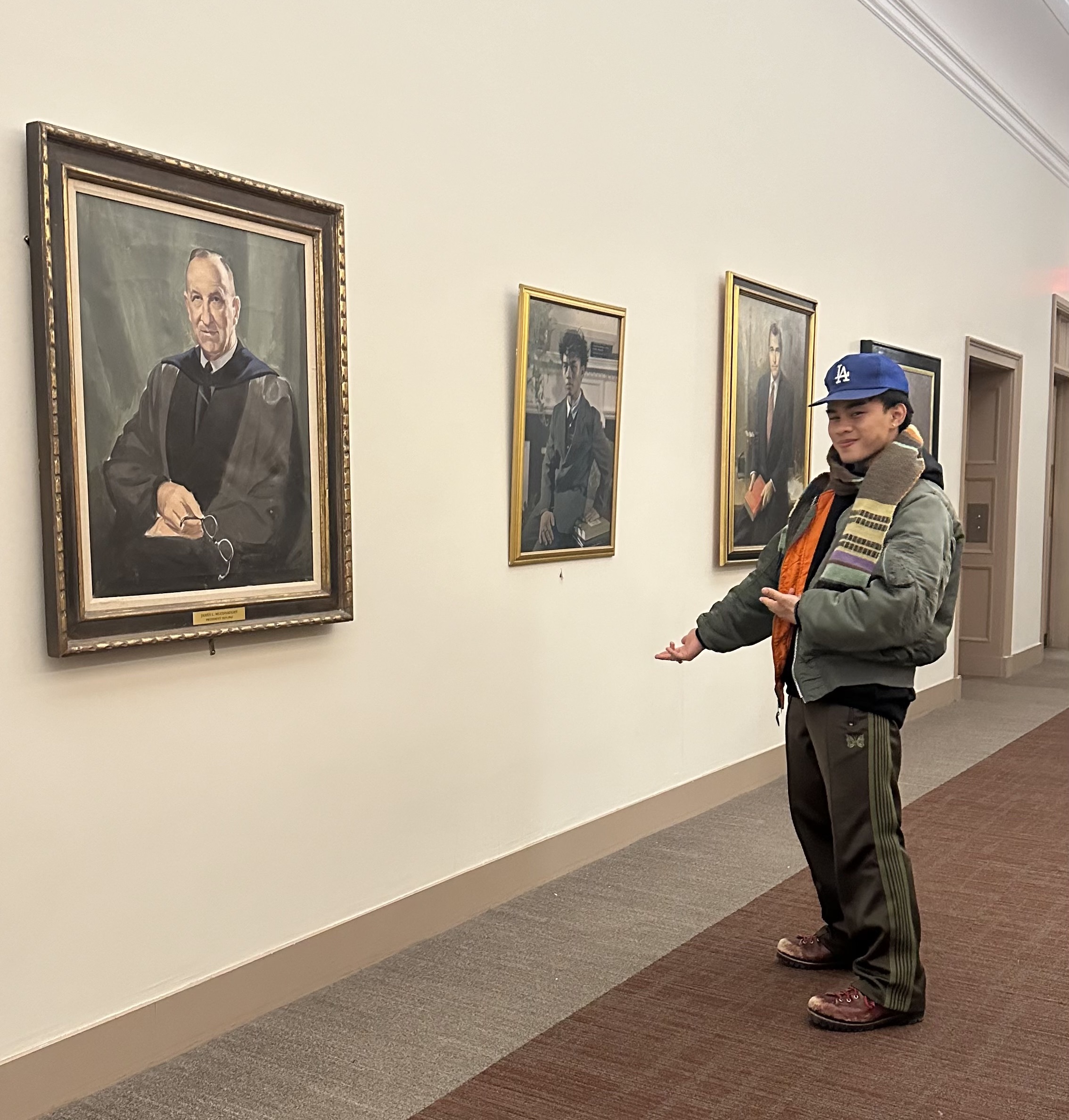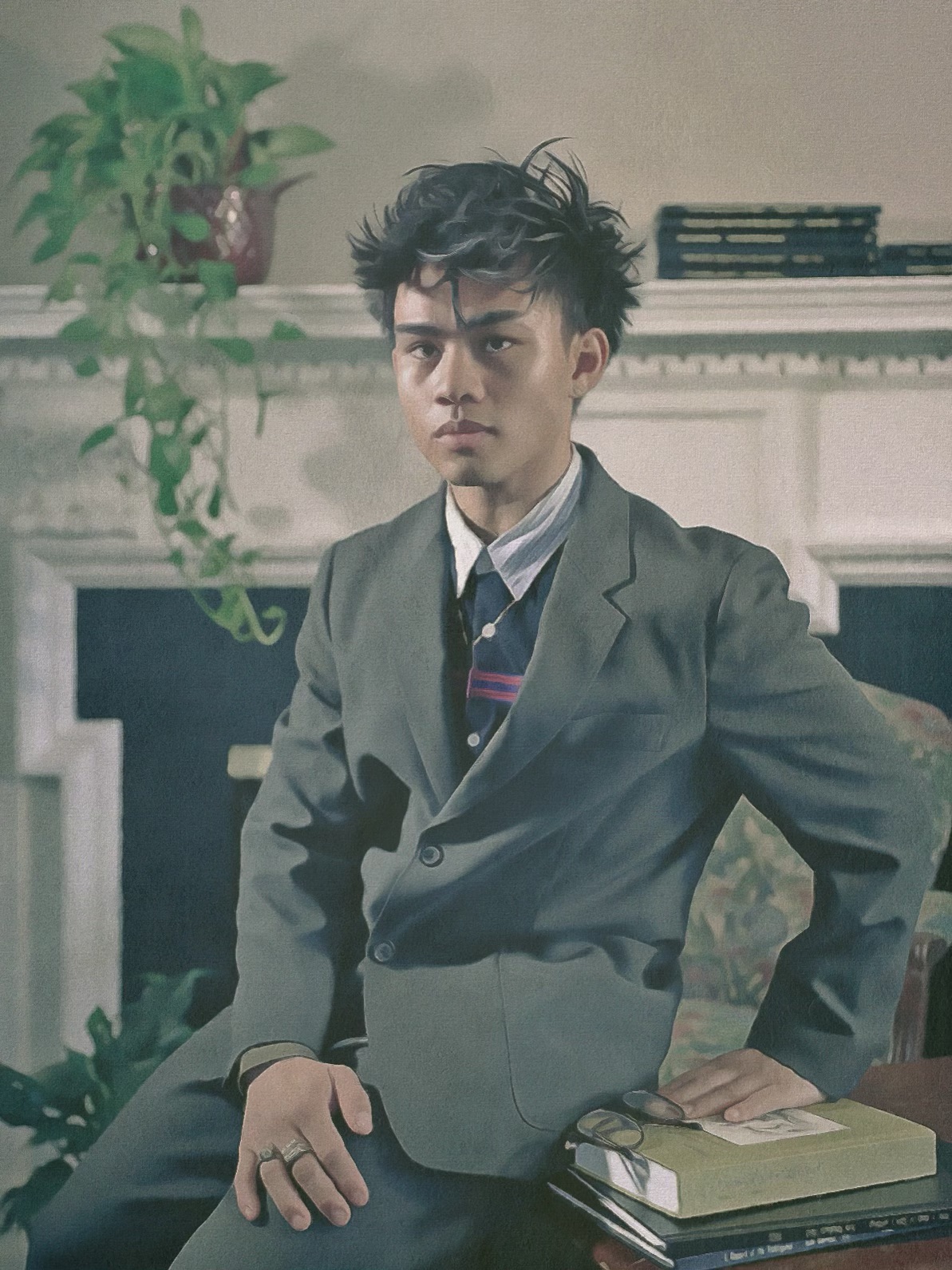
Meet Maseo Refuerzo ’24: artist, filmmaker, and certified man of mischief. You may have seen him biking around campus with a funky hat or encountered his face in some surprising places around campus. Or maybe you are one of the select, lucky few to have eaten a meal cooked by him. But if you know anything about Maseo, it is that no matter what challenges lie ahead, from his film thesis to evading the administration’s wrath, he is doing it with a smile on his face and an outfit to match.
The Argus: What is your major?
Maseo Refuerzo: I am a film major. But I should have done art studio.
A: Why should you have done art studio?
MR: No, I can’t become that. I won’t speak on it.
A: Okay, fine. Can you tell me a little about your film thesis then?
MR: Well, being real, it was a shit show. My actors dropped out. My original actors dropped out about a week before, and the mother of my film dropped out five days before. My original locations that I was going to film at dropped out a week and a half before. So everything I planned for a month and a half just went to shit. It was super high-stress. We had to readjust two weekend back-to-back shoots into three days. I definitely put my crew through it. We were working 14-hour days.
But it did teach us a lot. I did it with all my best friends. My sister was here and my cousin Jordan was here. I had never worked on a set where everything went wrong. So it taught me how to adjust in real-time and [how] to not freak out, but instead to just kind of do the best you can out of the circumstances. So now looking at the footage, I have to cut a film that wasn’t planned. And I have to work around things that I didn’t intend to and cut a good film with not the best footage. But I’m proud of it. And you know, it’s a vibe and it’s teaching me a lot, so I don’t regret any of it.
A: What inspired you to create your thesis and the concepts behind it?
MR: I wanted to make something really fun, like a hitman mafia movie. But it wasn’t clicking, and what clicked was something super honest and tender and lovey-dovey. It’s about a boy who is leaving home for the first time. I just kind of sat in silence for like a day or two and figured out what would come out. And that’s what came out. My brain is kind of fried about my thesis because it’s been a love-hate relationship, to be completely real.
The shitty thing about a thesis is, yes, it is low-stakes in many ways, but at Wesleyan it is high-stakes. When you are doing a production film thesis, you have no other choice but to screen it to 400 people that line up an hour before just to see your student film. Especially if you have high standards for yourself and you are not in love with what you have done. I had to surrender to my ego and just be at peace with it and make something good out of what I have, and I think I am.
A: Are you involved in other parts of student life? Or, let me rephrase my question: Can you walk me through all of the stunts you have pulled at Wesleyan? I think that is what the people want to know.
MR: I like fucking with Wesleyan. Where it all started was going to the gym and seeing all of these Wesleyan sports teams. On the way to the gym, there is this row of portraits that traces back to when Wesleyan started. But it’s a bunch of group portraits of white men that we have no relationship to. I found the first documented Wesleyan person of color on a sports team, and that was in 1962 or something. His name is Ong Lee. I stole that portrait and I hung it up in [Asian/Asian American House]. Then I thought, what if I reinsert myself into all of these portraits and try to create these counterfactual images? So that if someone is on a tour and they see these rows of white men, maybe they’ll see this little Filipino kid and think, “Who the fuck is that?” I think there are 8 to 10 of them that are still up there. It was for a class, but I ended up doing it for fun after because it was just hilarious and cool. A lot of really interesting [conceptual] art happening there.

On the third floor of Olin, there is a row of presidential portraits. I thought it would be cool to take one of them down and put myself up. I made a photo look like a painting and I put myself up. It ended up getting taken down by the next day in the afternoon. Two hours after that PSafe [Public Safety] came knocking on my door.
The president I ended up taking down was Butterfield, for two reasons. One because his reign of presidency was right before my family moved to the States—which is kind of why I started this project in the first place, knowing my family history and how it is super counter to Wesleyan’s. Basically, PSafe came knocking on my door, and I wasn’t home but they told my housemate, “We are investigating a stolen portrait on behalf of Olin. Is Maseo home?” I’m cool with some of the officers, they’re nice [people]. They said to tell me to call the supervisor. I called him and he said, “Where are you? Can you meet me in Olin in five minutes?” [Dispatch Supervisor] Lt. Tim Johnson—that’s the homie—he said, “I don’t know what they are going to do, but we just gotta get it back. I don’t know if Olin is going to press charges or the dean is going to give you points, but our job is just to get it back.”
I walk in with two Psafe officers. There are two people waiting for me and I introduce myself. I have a smile on my face because I think it is kind of funny, but they were very serious, very cold. They didn’t say anything. They were like, “Can you please just take us to the portrait?” I hid the portrait in the middle of the stacks. I walk them up to the third floor of Olin and take them through the stacks. I hid it behind one of those personal study tables. When I gave it back to them, they had super dramatic sighs of relief. They were just glad it wasn’t stolen or damaged or lost. They said, “If you actually want to install in Olin you can. Just let us know. Just don’t take stuff that is screwed to the walls.” The only reason I took Butterfield is because he was the only one not screwed to the wall. But later I learned that it was such a big deal not just because he was a president at Wesleyan, but that was the president that gave Martin Luther King Wesleyan’s honorary degree. So…I took the wrong president.
I asked for [my] portrait back, and they said, “We can’t give you that back.” So I asked them where it was, and they said it was confiscated. I asked where, and they said it is in the archival room. So I said, “What’s in the archival room?” And they told me, “It’s where we keep all the photos and paintings.” So all this to say, I pulled it off. I’m in the archives. They are going to keep me in there forever.
A: Why the obsession with portraiture at Wesleyan?
MR: The Wesleyan archive is super interesting. You go to these schools without realizing how old they actually are. Then when you see documented photographs of Wesleyan’s history. You think, this is really old and real. In the 1830s, I don’t even know where my family was. I’m also super into the whole mischief vibe, and I love photography as well. Something about inserting myself to create this funny but also counterfactual history to mess with people. Site-specific interventions—I don’t need to get into the intellect behind everything. It’s not really my vibe, but I think it is super interesting to do something kind of provocative.
There are times when I don’t really know how I ended up here. I get that my parents worked really hard, and that’s the reason why I was in a good school, which ended up with me being at a better school here at Wesleyan, but that’s not where I come from. My family’s history is a continual building process of trying to come up. I feel like I am that breakthrough generation because of my mom and dad. I went to Crossroads in Santa Monica, which is very much in its own right a legacy school, with kids who come from generational wealth. So when I think about myself and my positionality here at Wesleyan, with consideration of my family’s history and my mom and dad and also the other kids from Crossroads that go here, a lot of that goes into why projects like that are interesting to me. Alongside it just being hilarious and fun and mischievous and daring and exciting.
A: Speaking of that generational building, what do you see yourself doing after Wesleyan?
MR: I’m an art and film kid at heart. I don’t see it any other way but to work creatively because that’s just what I love to do. After college, obviously, the goal is to travel, but I want to start working. I want my own house. I want my own spot. I think I’m ready to be a proper adult with his own crib. Cooking for myself. Working creatively in film.
A: Do you have anything that you have taken from your experiences here?
MR: When you ask me that question, the first thing I immediately think of is my friends. My friends are everything to me here. I don’t love Wesleyan—I love the people that I get to be at Wesleyan with. They make the space for me. Everyday stuff with your friends is why I loved going here. I just love my friends, man. It is kind of crazy how you can meet cool people. I guess Wesleyan attracts some of the kinds of people that I would want to be friends with.
A: What is something you wish had known earlier in your time at Wesleyan?
MR: Man, I just think about how I came into the school when I was 17, and I’m 22 now. This is my fifth year here on campus. And I know that who I was freshman year is completely different from who I am now. I think that’s the case for everyone. But I’m a huge believer in riding the ups and downs. If you can, do your best to just ride your wave and not get too caught up in your downs, because you know your ups are going to come at some point. Not getting too caught up in the seasons and just being patient, giving yourself some grace in the process. In the end, work hard, but it’s not that deep.

A: Do you have anything else you want to add?
MR: I have some shout-outs! All right, if I forget you, I’m sorry. But shout-out to my mom and my dad and my grandma and grandpa and my little sister Luna, and my sister [Aijah] and my brother [Greyson] and Michael Fadugbagbe [’25] and Pelumi [Sokunbi ’25], and Reese [Chahal ’25] and Ben [Hsu ’24], and Kiana [Low ’24] and Mirembe [McDuffie-Thurmond ’25], Finn [Cassell], and Ethan [Barrett ’24]. Shout-out to food. Food is awesome. I love cooking, I forgot to say that. Shout-out to my house, Tracy [Wu ’25 and Swaraj Raj ’25], DBA, poker, fluffy otters, and golden horde. Love you guys.
Lia Franklin can be reached at lfranklin@wesleyan.edu.



Leave a Reply